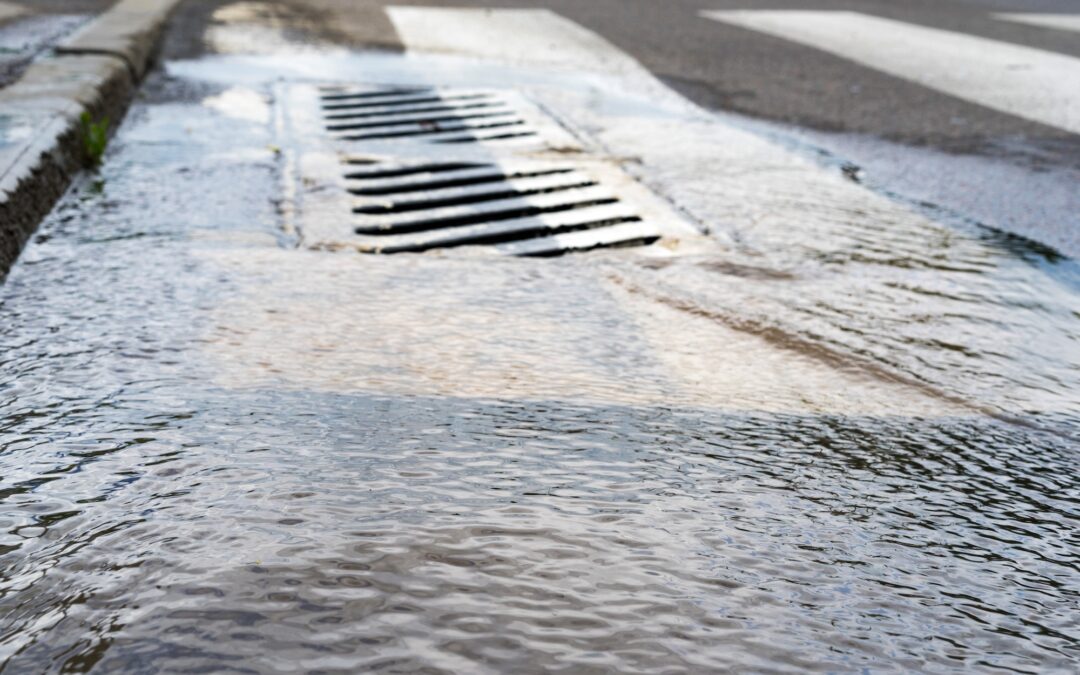Stormwater runoff is water from rainfall or snowmelt that does not soak into the ground. It flows over impervious or hard surfaces and sloped terrains directly into waterbodies or Municipal Separate Storm Sewer Systems (MS4s). As it flows, it collects sediment and pollutants including: heavy metals, grease, oil, antifreeze, pesticides, fertilizers, bacteria from animal waste, and other harsh chemicals and toxins. The stormwater runoff can cause environmental problems, devastate fish and wildlife habitat, and have detrimental effects on downstream recreational areas and drinking water supplies. EPA’s National Pollutant Discharge Elimination System (NPDES) Permitting Program regulates stormwater runoff from MS4s and industrial activity.
Discussion Points:
• What is stormwater management?
• Stormwater management program and safety considerations
• Facility monitoring requirements, BMPs, and employee training
Discussion:
It’s important to reduce the flow of runoff. State and federal stormwater regulations require many industrial facilities to do this by implementing stormwater management controls including: A Stormwater Management Program, safety considerations, and facility monitoring requirements. The Standard Industrial Code (SIC code) and stormwater exposure determines if your facility is covered under the State’s General Industrial Stormwater Permit, and will need to have a Stormwater Pollution Prevention Plan (SWPPP). Recycling facilities and dismantlers must comply with county and city stormwater ordinances. Counties are required by the state to conduct stormwater pollution compliance inspections at these facilities. In addition to the permit, all industrial facilities are required by law to implement Best Management Practices (BMPs) which are site-specific pollution prevention measures for industrial stormwater pollution control, including operating practices and structural controls that are designed to protect water quality in local waterbodies and comply with stormwater regulations. These BMPs can be found in the SWPPP for your facility.
The main goal for your facility is to keep rainfall from directly contacting working areas, outdoor equipment, and material storage areas. This can be done by moving industrial operations indoors and installing roofs, properly designed berms, swales, or other barriers. Storage methods should be designed specifically for your facility depending on the types of materials stored. Identify all equipment that may discharge potential pollutants and, if necessary, install drip pans under potential leaks. Fluid containers should be stored in designated areas, on an impervious surface, with secondary containment. Implement a plan designed to control unexpected leaks and spills so fluids do not reach storm drains or surfaces exposed to stormwater. Remember storm drains do not connect to a treatment system, so everything that flows down the drain will go directly into the nearest waterbody. Installing filters on the storm drains provides extra protection.
Preventing stormwater pollution is every employee’s responsibility. Employees should be trained in procedures including BMPs, and have a general understanding why it is important to implement practices to protect waterbodies and the environment. If any of the compliance items are missing, this can result in thousands of dollars in penalties, liability, and potential litigation. Regulations change and are often rewritten, so it is important to keep up with regulations and how they impact your business.
As always, stay safe out there!


Recent Comments